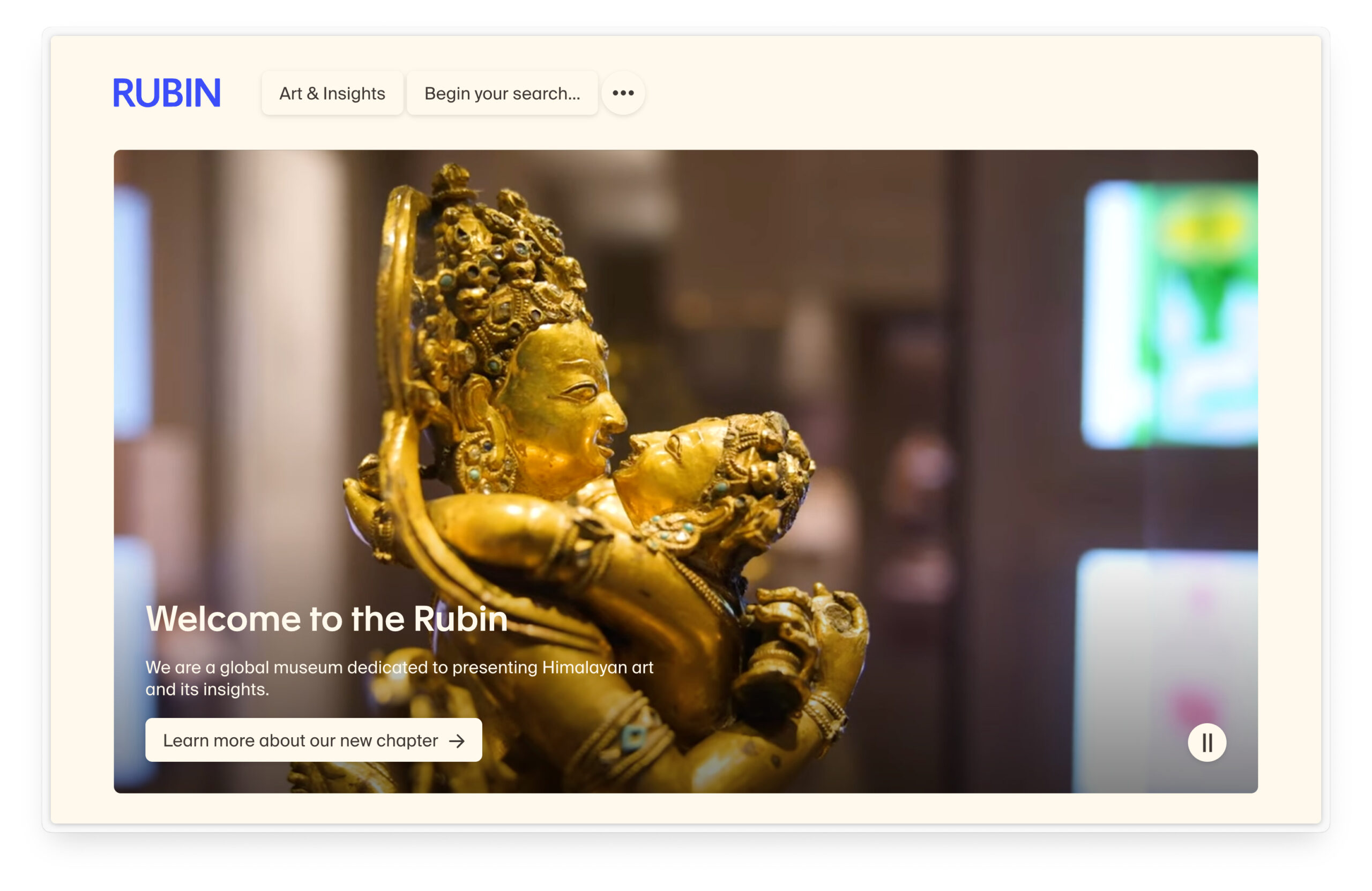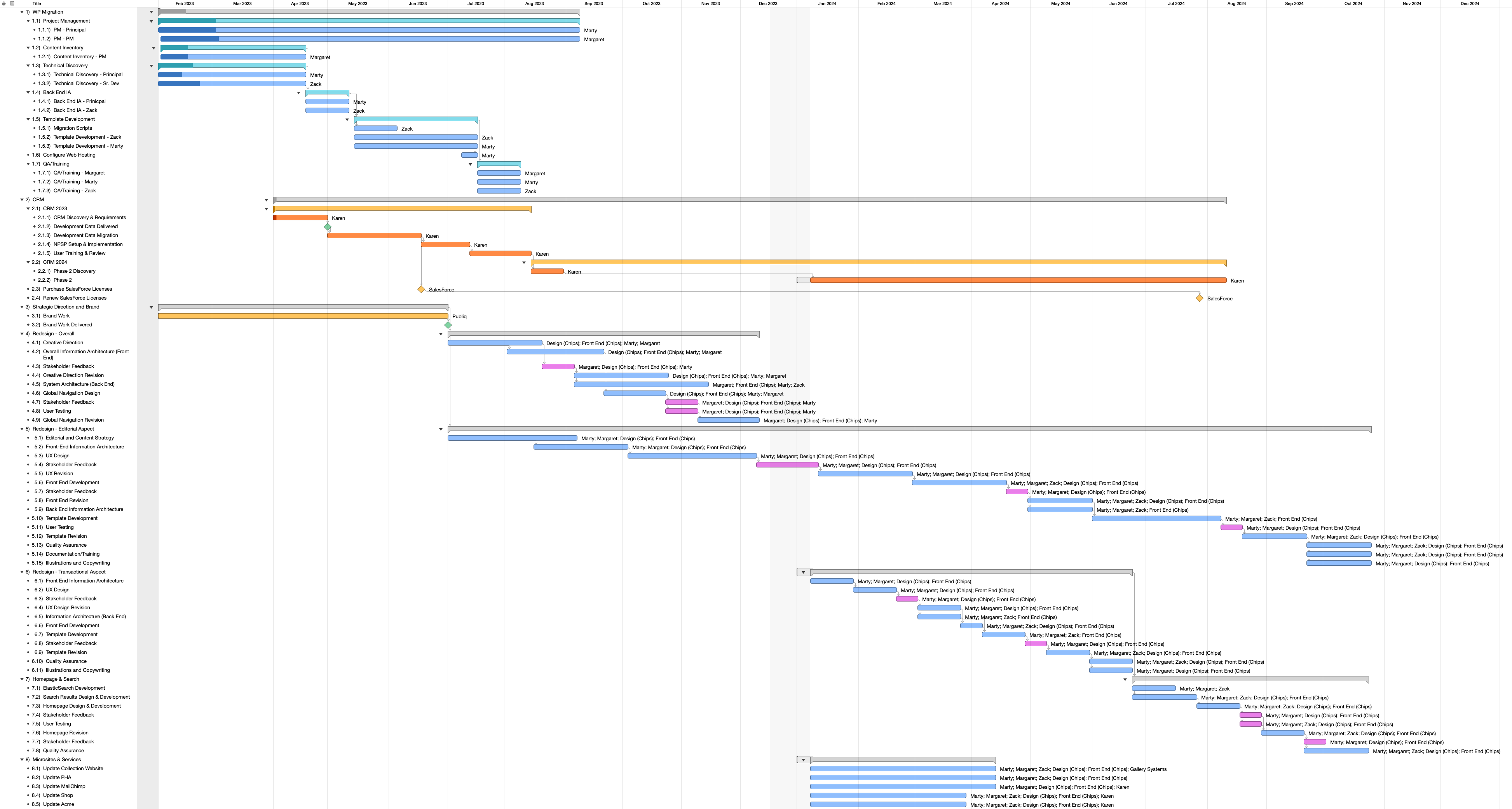Building the Rubin Museum’s Global Vision Through Digital Strategy
The Rubin is a global museum dedicated to sharing Himalayan art with the world. It brings together diverse perspectives—from Buddhist practitioners to neuroscientists and contemporary artists—to offer insights into the art and its meaning in life today. Through three phases and as many years, Spellerberg Associates supported the Rubin as it closed its NYC building and transitioned to a global presence. This digital transformation included adopting a new CRM and launching a new website. Our work focused on pushing the Rubin’s content globally, building awareness, developing new audiences, and increasing relevance.

Phase 1: Project Architecture
The project’s initial phase was a research and discovery period to understand the Rubin’s current digital landscape and how best a new website and CRM would fit within it.
We designed and deployed a website visitor motivation survey to track website usage by visitor type and commissioned the Center for Digital Experiences at Pratt Institute to analyze the results. We also conducted a two-day onsite visitor journey mapping workshop, created a visitor journey map from the workshops, and developed visual representations of visitor segmentations.
At the same time, we conducted qualitative staff interviews and vendor assessments, which resulted in the selection of Salesforce for the CRM and CHIPS, an NYC-based design and development studio, for the website. We produced a two-year project plan and budget to guide the rest of the project.

One of our first year deliverables was a plan for the next two years of website migration and redesign, and CRM implementation.
Phase 2: Laying the Foundation
In this phase, we migrated the Rubin’s website platform from ExpressionEngine to WordPress and CRM system from Raiser’s Edge to Salesforce, and trained staff in their use. By building internal capacity with these new platforms we empowered staff with improved tools and streamlined internal customer service using a single CRM. This front-loaded as much change as possible, to ease the strain of the eventual transition.
The website platform migration involved managing weekly meetings and tracking projects with OmniPlan, Asana, and GitHub. We compiled a content inventory, collaborated on technical discovery, made backend architecture decisions, developed a custom WordPress theme, and wrote migration scripts. We configured web hosting with WP Engine and AWS, performed quality assurance, fixed bugs, created documentation, and provided staff training before the website launch.
For the CRM platform migration, we documented Salesforce implementation requirements then migrated development data from Raiser’s Edge. This data included 100,000 individuals, 8,000 organizations, 65,000 gifts, and 250,000 actions. We set up Salesforce NPSP 3.0 and supported best practices for data input and admin skills. To support fundraising efforts, we implemented Salesforce integration and completed year-end data migration from Raiser’s Edge. We also supported communications activities by creating a contact input form, migrating marketing data, and setting up campaigns.
Phase 3: The Build Out
In the final phase, we worked in parallel with CHIPS, the design and development studio. While they designed and developed Rubin’s website, we focused on website concept testing, evaluating and implementing a transaction platform transition, and quality assurance. The website launched on time with minimal bugs.
To support the design team’s work, we conducted three formative evaluations to gather feedback from groups not involved in the design process. Small focus groups with curatorial and development staff previewed designs and user experience. An email survey to the Museum’s e-newsletter subscribers helped prioritize search terms, resulting in a hierarchy of interest and segmentation by visitor motivation. Onsite website usability testing helped confirm the user experience for the website’s innovative “Begin Your Search” feature.
Part of the migration to a new CRM required the Rubin to add transaction middleware for tickets, registration, donations, and memberships. We developed a scorecard of the institution’s needs and then identified and interviewed potential vendors. After the vendor was selected, we configured Salesforce and GiveLively, integrated them with the website, and supported CRM adoption by the fundraising and communications teams.
In the final phases of the website launch, we supported a thorough and rigorous quality assurance process. We managed a thorough review of the website using an AirTable system to submit bugs and track content and technical issues. This support ensured clear communication of tasks for the website launch.
Results
We supported the Rubin Museum of Himalayan Art’s digital transformation as it transitioned to a global museum. Our work in digital strategy, project management, and integrating digital thinking throughout the organization enabled the Museum to close its physical doors and reopen as a robust digital platform. This transformation helped Rubin become a unique digital destination, embodying its vision of opening windows to people’s inner worlds and enhancing its reach in the global museum landscape. With a solid digital foundation, the Rubin is well-positioned to serve a worldwide audience and support future growth.
Credits
For Spellerberg Associates: Consulting by Marty Spellerberg, Margaret Sternbergh and Karen Bush. Workshop facilitation by Allegra Burnette. WordPress development by Zack Rothauser, Heather Sansone and Trenisha Goslee, with support from Jennifer Moore.
Posted October 2024